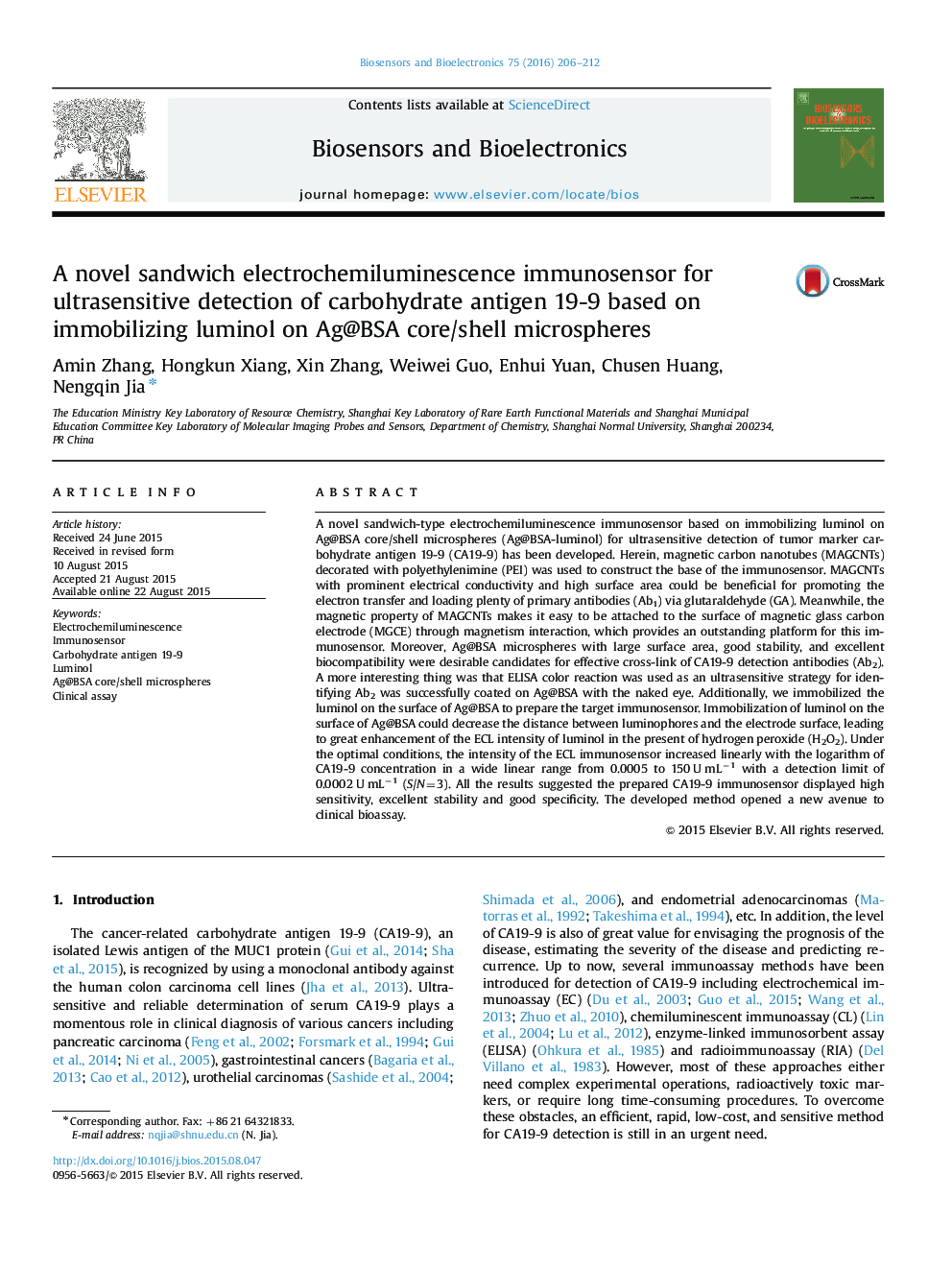| Article ID | Journal | Published Year | Pages | File Type |
|---|---|---|---|---|
| 7231400 | Biosensors and Bioelectronics | 2016 | 7 Pages |
Abstract
A novel sandwich-type electrochemiluminescence immunosensor based on immobilizing luminol on Ag@BSA core/shell microspheres (Ag@BSA-luminol) for ultrasensitive detection of tumor marker carbohydrate antigen 19-9 (CA19-9) has been developed. Herein, magnetic carbon nanotubes (MAGCNTs) decorated with polyethylenimine (PEI) was used to construct the base of the immunosensor. MAGCNTs with prominent electrical conductivity and high surface area could be beneficial for promoting the electron transfer and loading plenty of primary antibodies (Ab1) via glutaraldehyde (GA). Meanwhile, the magnetic property of MAGCNTs makes it easy to be attached to the surface of magnetic glass carbon electrode (MGCE) through magnetism interaction, which provides an outstanding platform for this immunosensor. Moreover, Ag@BSA microspheres with large surface area, good stability, and excellent biocompatibility were desirable candidates for effective cross-link of CA19-9 detection antibodies (Ab2). A more interesting thing was that ELISA color reaction was used as an ultrasensitive strategy for identifying Ab2 was successfully coated on Ag@BSA with the naked eye. Additionally, we immobilized the luminol on the surface of Ag@BSA to prepare the target immunosensor. Immobilization of luminol on the surface of Ag@BSA could decrease the distance between luminophores and the electrode surface, leading to great enhancement of the ECL intensity of luminol in the present of hydrogen peroxide (H2O2). Under the optimal conditions, the intensity of the ECL immunosensor increased linearly with the logarithm of CA19-9 concentration in a wide linear range from 0.0005 to 150Â UÂ mLâ1 with a detection limit of 0.0002Â UÂ mLâ1 (S/N=3). All the results suggested the prepared CA19-9 immunosensor displayed high sensitivity, excellent stability and good specificity. The developed method opened a new avenue to clinical bioassay.
Related Topics
Physical Sciences and Engineering
Chemistry
Analytical Chemistry
Authors
Amin Zhang, Hongkun Xiang, Xin Zhang, Weiwei Guo, Enhui Yuan, Chusen Huang, Nengqin Jia,
